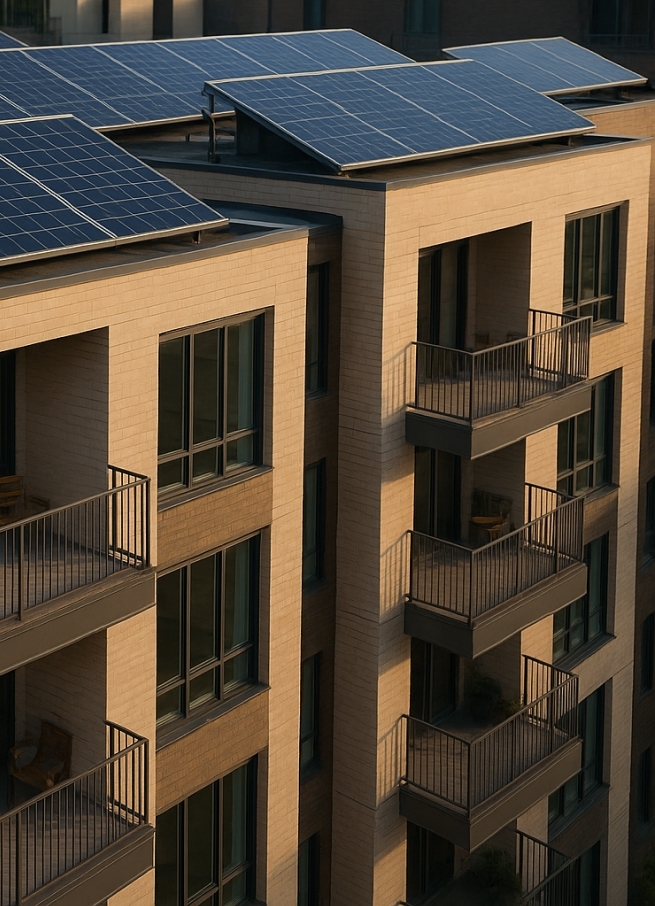How to Maximize Solar Savings: Leveraging Energy Usage Data with Ivy
.png)
With electricity rates constantly on the rise, going solar is an excellent first step to lowering your utility bill. However, to truly reap the benefits of solar energy, you need to know how to optimize your energy usage. The key to maximizing your savings is simple: shift as much of your electricity usage (especially large appliance usage) as possible to times when the sun is up. In this blog post, we'll explore why using Live Solar availability times is essential to getting the biggest savings and how you can take advantage of it.
The 3 Types of Energy Usage with Solar
Live Solar
Live Solar is the real-time energy produced by your solar panels, available for immediate use. The highest availability of Live Solar is generally 10 am to 3 pm, but it can vary by season and by day depending on the weather. If the sun is out and high in the sky, your panels are likely producing Live Solar.
Solar Credits
Let’s say your solar panels produce 5 kWh from 10 to 11 am, but you only use 2 kWh in that hour. You will have a surplus of 3 kWh that is exported to the grid. Your utility company provides a Solar Credit for that energy. This is the second most valuable type of solar energy, after Live Solar. While these Solar Credits do provide you with savings on your monthly bill, they are not as valuable as Live Solar.
Grid Energy
The electricity pulled from the grid is anything not covered by your Live Solar or Solar Credits. This is the most expensive type of usage, as it is subject to full utility rates. For example, if you’re on a time-of-use plan and pull energy from the grid during peak hours, you’re going to pay the peak rate.
The Value of Live Solar
Solar energy has the highest value when you use it right away. This is because it prevents you from pulling more expensive energy from the grid. Also, depending on your Virtual Net Energy Metering (VNEM) tariff, utility credits for excess solar energy exported to the grid are often at a lower rate than retail. So, even though exported energy earns you a credit, it is not quite as valuable as Live Solar. Therefore, the more you can take advantage of Live Solar availability times, the greater your savings can be.
How Ivy Helps Residents Maximize Their Solar Savings
Multi-unit buildings and multifamily communities with solar and Ivy’s Virtual Grid get to tap into resident energy usage data. Using utility-grade monitoring, Ivy collects individual meter data and generates a breakdown of the three types of energy usage for each resident every month. Then, residents can use those insights and friendly tips to shift energy usage to maximize their solar savings. For example, here is a comparison of two residents who use the exact same amount of electricity per month, but their savings and bills are different.
Resident B: 463 kWh, $114 Bill, and $8 of Solar Savings
- 20% Live Solar
- 55% Solar Credits
- 25% Grid Energy
With Ivy’s monthly solar bill, this resident would receive an illustration and simple explanation of this usage data. Their bill would come with tips to help them understand what Live Solar is, when the prime time is to take advantage of Live Solar, and how that would help them further lower their electricity bill.
Resident A: 463 kWh, $101 Bill, and $15 of Solar Savings
- 82% Live Solar
- 15% Solar Credits
- 3% Grid Energy
This resident leveraged the energy usage data and tips in their monthly solar bill to maximize their savings. They shifted high electricity activities to Live Solar times whenever possible, including things like doing laundry, running the dishwasher, baking in an electric oven, and vacuuming.
The great thing about leveraging Live Solar to reduce your bill is that it’s not about using less electricity. It’s simply about shifting your usage time.
Ivy’s Energy Usage Data Drives Equitable Solar Benefits
Not only does Ivy guarantee that residents will never pay more for electricity with solar than what they would pay to the utility company without solar, but Ivy also provides helpful data to optimize solar power usage and savings. Furthermore, this resident energy usage data is what enables Ivy to equitably distribute solar benefits in multi-unit and multifamily properties. Anyone who has lived in an apartment where they divide the water bill among residents without basing it on individual meter usage knows how important it is to have a fair utility bill. With Ivy, you get that and more. If your community doesn’t have solar, click here to request solar for your community with our help.





